Understanding Emotional Outbursts in Children with Autism
Emotional outbursts in children with autism are complex behaviors often triggered by sensory overload, communication challenges, or changes in routine. These episodes can severely impact a child's ability to engage with their environment and develop social skills. Recognizing the underlying causes of such outbursts is vital for parents, caregivers, and therapists committed to fostering emotional regulation and improving quality of life. Applied Behavior Analysis (ABA) therapy emerges as a scientifically validated approach that offers practical strategies and tailored interventions to manage, reduce, and ultimately transform these emotional challenges into opportunities for growth.
Identifying the Roots of Emotional Outbursts in Autism
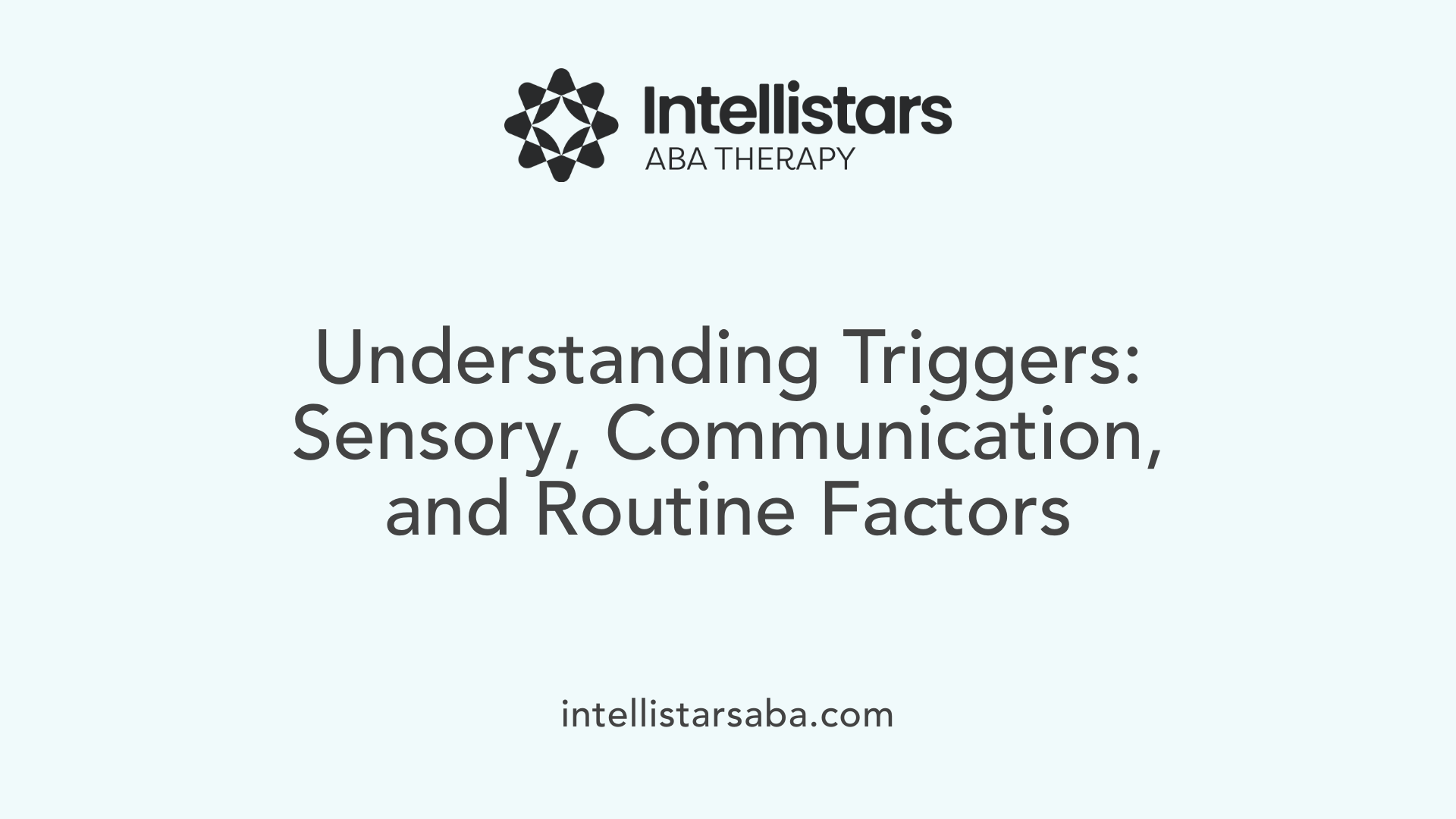 Children with autism often face specific challenges that can lead to emotional outbursts, such as anger or frustration. Understanding these triggers is crucial for implementing effective management strategies.
Children with autism often face specific challenges that can lead to emotional outbursts, such as anger or frustration. Understanding these triggers is crucial for implementing effective management strategies.
One common cause is sensory overload. Many children with autism have heightened sensitivities to sights, sounds, textures, or other sensory inputs. When overwhelmed by stimuli, they can become distressed, leading to outbursts of anger or frustration. Bright lights, loud noises, or even tight clothing can act as triggers.
Communication difficulties also play a significant role. When children cannot express their needs or feelings effectively, they may feel misunderstood or frustrated. This inability to communicate clearly often results in behavioral outbursts, especially if their needs go unmet.
Routine disruptions and environmental changes are another major factor. Children thrive on predictability. Sudden changes to daily schedules, unfamiliar settings, or transitions can create stress and insecurity, prompting emotional reactions. Maintaining consistent routines helps provide a sense of stability.
Unmet needs, such as hunger, fatigue, or medical issues, can also contribute to emotional distress. When a child's basic needs are not satisfied, their ability to regulate emotions diminishes, increasing the likelihood of tantrums or anger outbursts.
Finally, emotion dysregulation—difficulty managing intense feelings—is common among children with autism. They may struggle to cope with feelings like anger or anxiety, which can result in frequent outbursts. Recognizing these underlying causes allows caregivers and professionals to develop targeted interventions.
By identifying these triggers early, tailored strategies can be introduced to help children manage their emotions more effectively. Approaches like Applied Behavior Analysis (ABA) focus on teaching coping skills, improving communication, and creating predictable environments. These interventions aim to reduce emotional outbursts, improve emotional regulation, and enhance overall well-being for children with autism.
The Role of ABA in Emotion Management
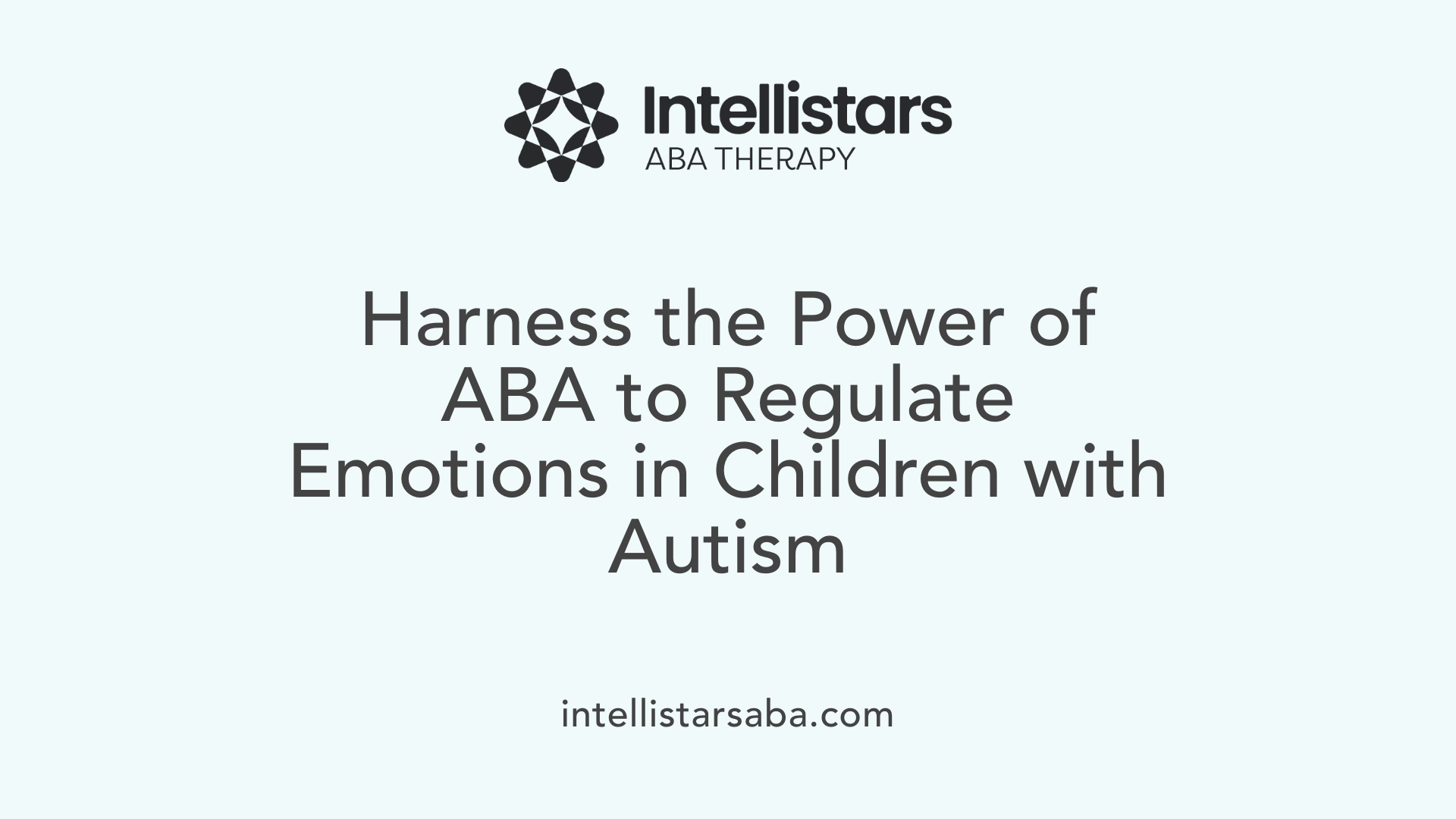
How does ABA therapy help manage emotional outbursts and anger in children with autism?
Applied Behavior Analysis (ABA) is widely used to help children with autism manage emotions such as anger more effectively. This evidence-based approach involves systematic assessment and intervention tailored to each child's needs.
A crucial first step in ABA is conducting a Functional Behavior Assessment (FBA) to identify the specific triggers and reasons for behaviors like anger and frustration. Understanding these triggers helps in developing targeted intervention plans.
One of the central strategies in ABA is teaching children to recognize, understand, and label their emotions using visual supports, social stories, and role-playing. These tools help make abstract emotions more concrete, allowing children to become aware of what they are feeling.
Positive reinforcement plays a vital role in encouraging children to practice emotional regulation skills. When children successfully identify their feelings or use coping strategies such as deep breathing or requesting a break, they receive praise or rewards that motivate continued use.
ABA techniques also focus on teaching coping skills, like deep breathing exercises, requesting sensory breaks, or engaging in calming activities. These skills are practiced in both controlled settings and naturally occurring situations, helping children apply them in everyday life.
Environmental adjustments are part of intervention plans as well. For example, reducing loud noises or creating predictable routines can decrease sensory overload and reduce anger triggers.
Caregiver training is essential, enabling parents and other caregivers to implement consistent strategies at home and in different settings. This consistency helps children generalize skills and build resilience over time.
Through a combination of behavioral teaching, environmental modifications, and caregiver involvement, ABA helps children develop emotional awareness, regulation, and appropriate responses. The ultimate goal is to empower children to manage their emotions, thereby reducing outbursts and improving quality of life.
Effective ABA Techniques for Regulation Skills
What ABA strategies and techniques can be used to promote emotional regulation?
Applied Behavior Analysis (ABA) offers numerous practical strategies to help children with autism develop better emotional regulation skills. A core approach involves teaching children to recognize and understand their emotions. Visual supports, such as emotion cards, photographs, icons, and social stories, help children identify and label feelings like anger, frustration, or anxiety.
Reinforcement plays a vital role in encouraging calm and adaptive behaviors. When a child employs a coping strategy—like taking deep breaths or requesting a break—positive reinforcement, such as praise or rewards, strengthens the likelihood of that behavior recurring.
Breaking down regulation skills into small, manageable steps using task analysis makes learning more accessible. For example, a child might first learn to recognize their feelings, then practice requesting a break, and finally apply calming techniques independently.
Creating a supportive environment is also crucial. Visual schedules, offering choices between calming activities, and reducing sensory overloads help prevent triggers that may lead to emotional outbursts. These environmental modifications set the stage for success.
Modeling and role-playing are effective methods where caregivers and therapists demonstrate appropriate responses to frustration, allowing children to imitate and practice these behaviors in a safe setting. Additionally, Functional Communication Training (FCT) teaches children alternative ways to express their needs and frustrations, reducing behavioral outbursts and promoting emotional understanding.
By combining these strategies—visual supports, reinforcement, task analysis, environmental adjustments, and modeling—ABA helps children acquire the skills necessary for emotional regulation. Over time, these techniques foster independence, resilience, and improved emotional well-being.
Teaching Emotional Skills Through ABA Interventions
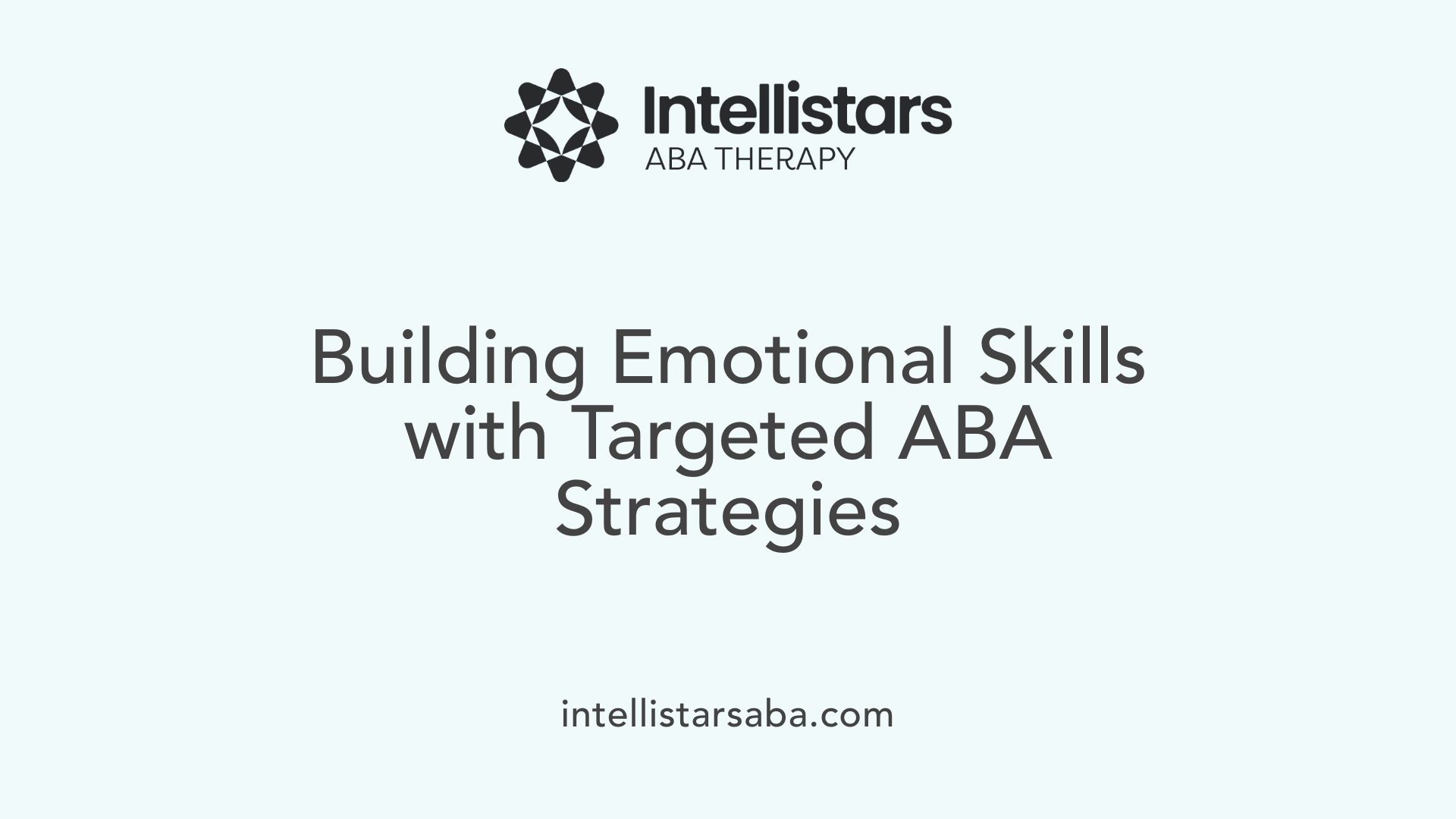
How can ABA be used to teach emotional regulation skills to children with autism?
Applied Behavior Analysis (ABA) offers effective tools for helping children with autism develop emotional regulation skills. These structured, evidence-based approaches focus on recognizing, understanding, and managing emotions in daily life.
One common strategy involves using visual supports such as emotion charts, social stories, and role-playing exercises. These tools help children identify and label their feelings accurately. For example, a visual emotion chart allows a child to point to pictures representing different emotions like anger, frustration, or calmness.
Teaching calming strategies is essential. Techniques such as deep breathing, requesting a break through a communication system like picture cards, or engaging in sensory activities help children manage heightened emotions. Reinforcing calm behaviors with praise encourages their recurrence.
Replacement behaviors are also taught. For instance, children learn to use visual cues—like break cards or calming tools—when feeling overwhelmed. Modeling appropriate responses and practicing these in safe environments strengthen emotional control.
Self-monitoring plays a significant role. Children can be taught to recognize signs of rising frustration and use coping strategies before an emotional outburst occurs. Consistently applying these methods across settings, especially with parental involvement, enhances their effectiveness.
Environmental modifications, such as creating predictable routines and giving choices, reduce anxiety and prevent emotional escalations. Additionally, personalized sensory interventions can help children calm down when sensory sensitivities trigger upset.
Overall, ABA aims to instill lifelong skills in children for identifying, understanding, and regulating emotions. These skills foster greater independence, social competence, and resilience, contributing positively to their overall quality of life.
ABA's Impact on Emotional Behavior and Resilience
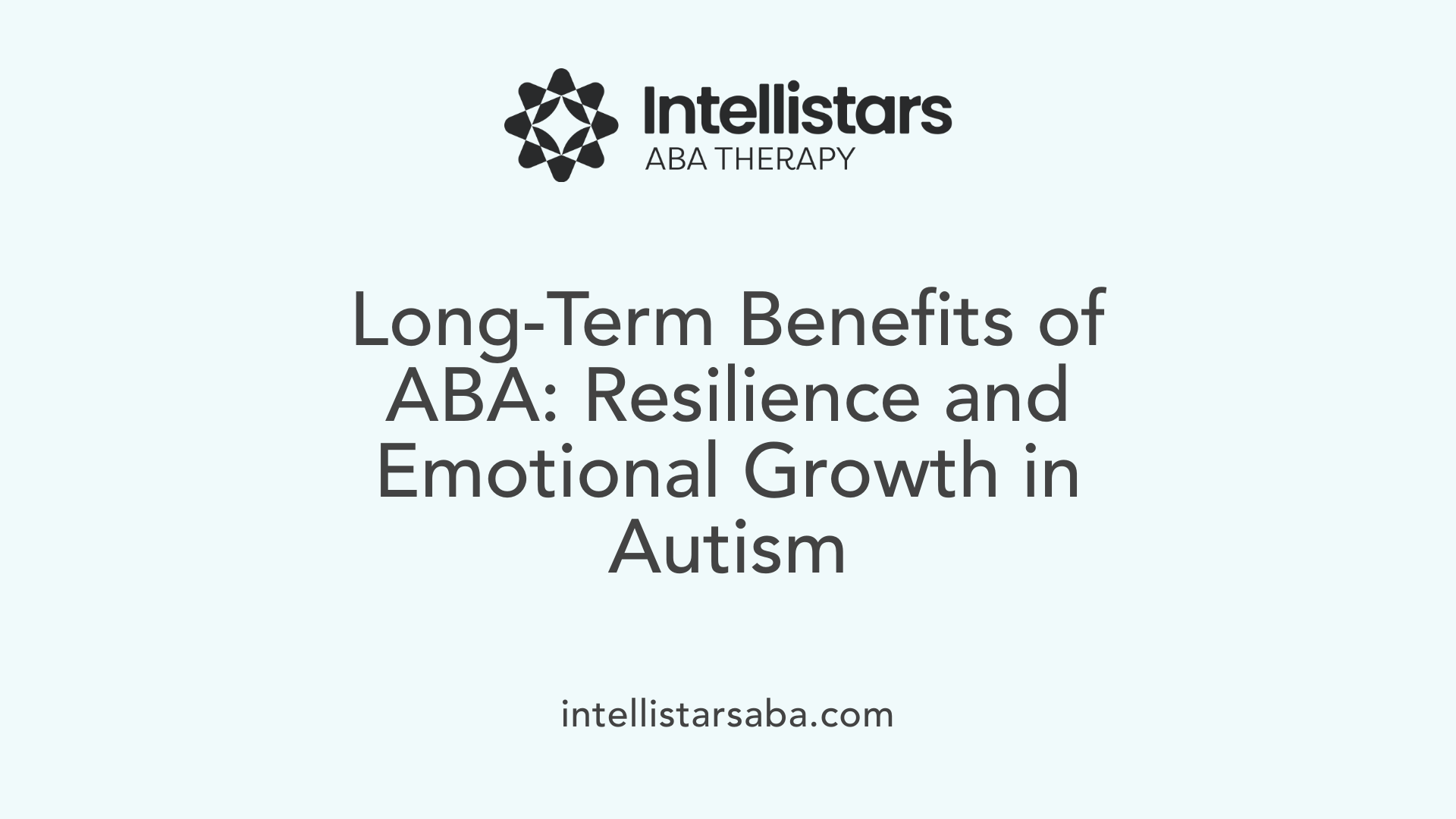
How does ABA support long-term skill development in managing emotions?
Applied Behavior Analysis (ABA) focuses on building lasting skills that help individuals with autism manage their emotions better over time. It emphasizes teaching emotional regulation, communication, and self-awareness, which are essential for coping with anger and frustration.
Through systematic assessment and intervention, ABA creates personalized plans that incorporate skills like recognizing emotions, using visual aids, and practicing calming techniques. These strategies are reinforced consistently across different environments, ensuring that children can transfer what they learn at therapy to everyday situations. The goal is to foster independence and resilience, enabling children to handle emotional challenges more effectively as they grow.
How does ABA contribute to behavior modification and resilience building?
ABA uses scientifically validated methods to modify challenging behaviors, such as tantrums and outbursts, by teaching alternative, more appropriate responses. Techniques such as positive reinforcement reward calm and adaptive behaviors, encouraging their recurrence.
Moreover, ABA incorporates desensitization and graduated exposure to help children tolerate sensory inputs or stressful transitions that might otherwise trigger anger. Over time, these interventions strengthen their ability to regulate emotions, adapt to changing circumstances, and recover quickly from stressful events. Such resilience-building approaches are vital for improving overall emotional well-being.
Are there success stories or evidence showing ABA's effectiveness in managing emotional outbursts?
There is substantial evidence and numerous success stories demonstrating ABA's effectiveness in this area. Many children with autism have experienced notable reductions in tantrums and emotional dysregulation after targeted interventions. For example, the Carter family reported a significant decrease in emotional outbursts following ABA therapy that incorporated strategies like deep breathing and visual supports.
Children often learn to better express their feelings using tools like emotion charts, verbal communication, or picture systems. Role-playing and modeling help them practice appropriate responses in a safe environment, leading to increased emotional resilience.
Overall, research and real-life case studies consistently show that ABA can produce meaningful improvements in emotion regulation, social skills, and quality of life for children on the spectrum.
| Aspect | Details | Additional Info |
|---|---|---|
| Long-term skill development | Focuses on teaching enduring emotional and communication skills | Ensures transfer to natural settings |
| Behavior modification | Uses positive reinforcement and desensitization | Leads to reduced outbursts |
| Success stories | Families report decreased tantrums and better emotional control | Evidence from clinical data and personal accounts |
Supporting Families and Caregivers
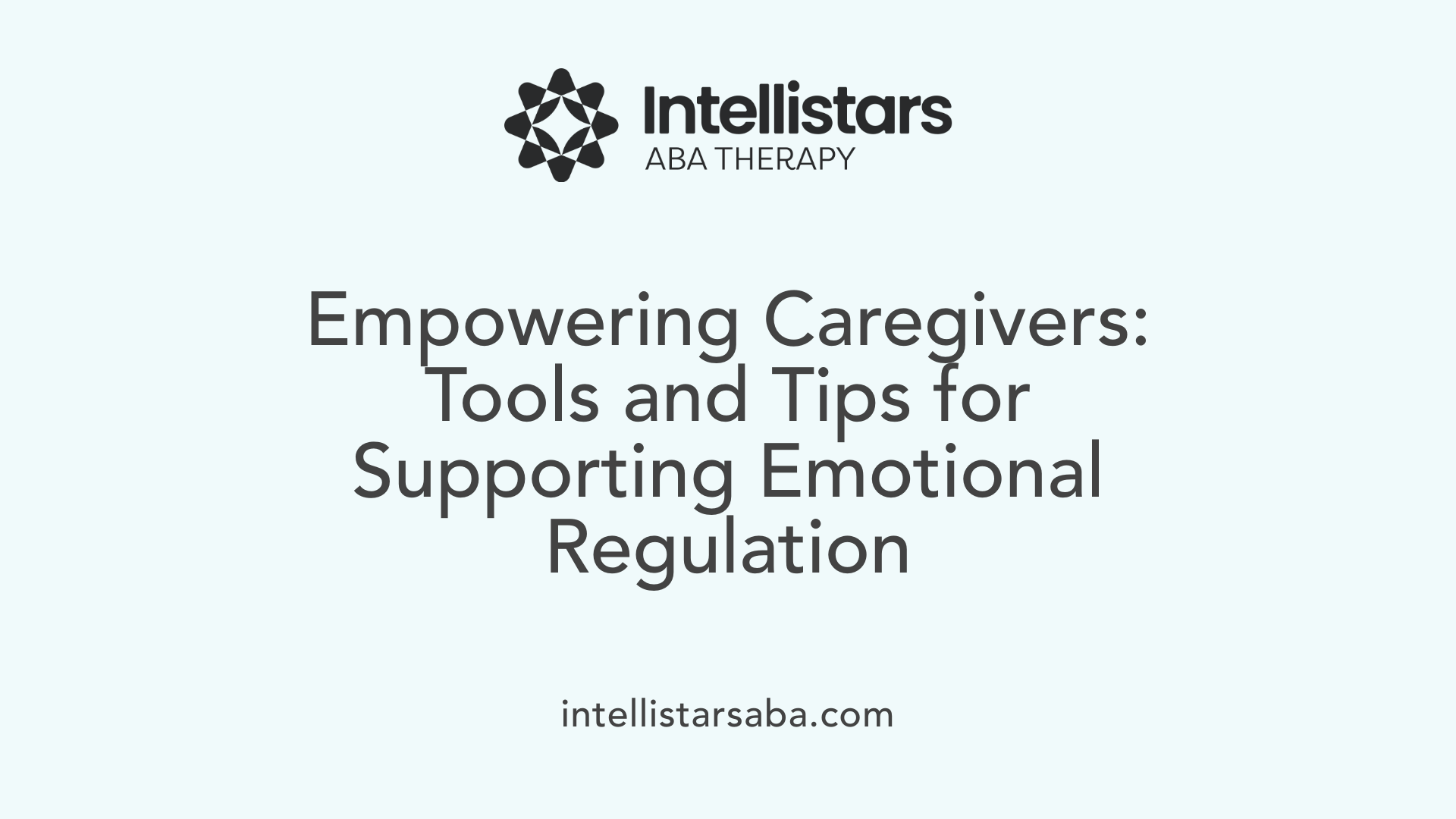
How can parents and caregivers support children with emotional regulation challenges through ABA?
Parents and caregivers play a crucial role in helping children with autism manage their emotions effectively. One effective approach is to consistently apply evidence-based ABA strategies such as positive reinforcement, modeling, and shaping behaviors. When children exhibit calm or adaptive behaviors, caregivers should recognize and reward these actions, encouraging their recurrence.
Creating a structured environment with visual supports can significantly reduce anxiety. Tools like emotion charts, social stories, and visual schedules help children recognize and understand their feelings. This understanding promotes emotional awareness and reduces the likelihood of escalation.
Teaching coping techniques is vital. These include deep breathing exercises, progressive muscle relaxation, sensory breaks, and mindfulness activities. Such tools help children self-soothe when feeling overwhelmed or frustrated. Setting up sensory-friendly spaces and maintaining predictable routines with visual cues further support a sense of security.
An essential component is caregiver modeling. When adults demonstrate calm behaviors and effective emotional regulation, children are more likely to imitate these strategies. Collaboration with therapists ensures that the implemented strategies are personalized and consistently applied across settings.
Maintaining caregiver well-being and patience is equally important. By working closely with ABA professionals, families can adapt and refine strategies to meet each child's unique needs, fostering resilience and independence.
Additional tips for caregivers
| Strategy | Description | Benefits |
|---|---|---|
| Consistent reinforcement | Reward positive behavior regularly to encourage its recurrence | Builds new skills and emotional control |
| Use visual supports | Employ emotion charts and visual schedules to help children identify feelings | Reduces confusion and anxiety |
| Teaching calming techniques | Introduce deep breathing, sensory breaks, and mindfulness practices | Promotes self-regulation |
| Collaborate with professionals | Work with ABA therapists to tailor strategies to the child's needs | Ensures effective and consistent support |
These combined efforts empower children with autism to develop better emotional regulation in a safe, predictable environment, ultimately improving their overall well-being.
Fostering Emotional Growth in Children with Autism
Managing emotional outbursts in children with autism requires a comprehensive, individualized approach that combines understanding triggers, teaching skills, and applying consistent behavioral strategies. ABA therapy stands out as an effective, evidence-based framework for addressing these challenges. Through systematic assessment, personalized intervention plans, and caregiver involvement, ABA equips children with the tools necessary for emotional regulation, reducing tantrums and fostering resilience. Success stories abound, showcasing improvements in communication, social skills, and overall well-being. With patience, consistency, and proper support, children with autism can learn to navigate their emotions more effectively, opening pathways to greater independence and a better quality of life.
References
- Autism and Anger: Does ABA Help With Anger Issues?
- How ABA Therapy Supports Emotional Regulation in Children
- Applied Behavior Analysis (ABA): Unveiling its Impact
- From Meltdowns to Calm:ABA Therapy Strategies for Managing ...
- Intense Anger And Autism: 8 ABA Tips For Handling Emotions
- Autism and Anger: Does ABA Help With Anger Issues?
- What Role Does ABA Therapy Play in Autism Treatment?
- The Controversy Around ABA - Child Mind Institute
- Teaching Emotional Regulation with ABA Tools
- Teaching Emotional Regulation in Autistic Children - Childwise ABA






